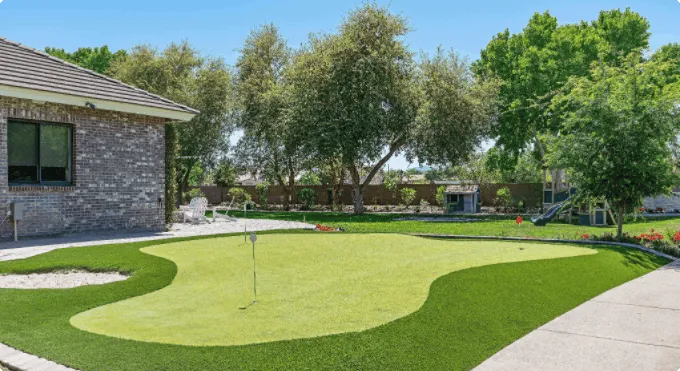
- Afrikaans
- Arabic
- Belarusian
- Bengali
- Czech
- Danish
- Dutch
- English
- Esperanto
- Estonian
- Finnish
- French
- German
- Greek
- Hindi
- Hungarian
- Icelandic
- Indonesian
- irish
- Italian
- Japanese
- kazakh
- Rwandese
- Korean
- Kyrgyz
- Lao
- Latin
- Latvian
- Malay
- Mongolian
- Myanmar
- Norwegian
- Persian
- Polish
- Portuguese
- Romanian
- Russian
- Serbian
- Spanish
- Swedish
- Tagalog
- Tajik
- Thai
- Turkish
- Turkmen
- Ukrainian
- Urdu
- Uighur
- Uzbek
- Vietnamese
Exploring the Impact of Artificial Turf on Natural Soil Health and Ecosystem Dynamics
Dec . 21, 2024 00:34 Back to list
The Rise of Fake Grass Impact on Soil and Sustainability
In recent years, the popularity of fake grass, or artificial turf, has skyrocketed, particularly in residential gardens, commercial properties, and sports fields. This trend points toward a significant shift in how we view landscaping and the environments we create. However, the implications of installing fake grass on soil health, ecological systems, and overall sustainability are critical to consider.
Understanding Fake Grass
Fake grass is made from synthetic fibers designed to look like real grass. It is often made from plastic materials such as polyethylene, polypropylene, or nylon. The appeal of artificial turf includes reduced maintenance costs, no need for watering or mowing, and a persistently green appearance that enhances curb appeal.
However, beneath the surface, the impact of fake grass on soil goes beyond aesthetics and maintenance
. While it may resolve some immediate practical concerns, it poses several environmental issues that merit attention.Effects on Soil Health
The installation of fake grass generally involves a layer of infill, which is often composed of rubber or sand, laid over an impermeable backing. This prevents water from penetrating the soil beneath, effectively sealing it off from natural processes. When real grass is alive, its root systems promote aeration, allow for water infiltration, and support nutrient cycling through decomposition of organic matter. Conversely, with fake grass, there is no natural filtration, which can lead to issues such as water runoff and erosion.
Moreover, the lack of living vegetation leads to biodiversity loss in the area. Natural grasslands and lawns provide habitats for various insects, birds, and small mammals. The absence of these ecosystems can disrupt local wildlife, leading to a decline in species that rely on natural landscapes for survival. This loss of biodiversity is concerning, particularly in urban areas where green spaces are already limited.
fake grass on soil

Environmental Concerns
Additionally, the production of artificial turf contributes to environmental degradation. The manufacturing process is energy-intensive and generates greenhouse gas emissions. The plastic fibers used in fake grass often come from petroleum, a non-renewable resource. Furthermore, once artificial turf reaches the end of its life cycle, it cannot easily be recycled and frequently ends up in landfills, contributing to pollution and waste management issues.
One oft-quoted benefit of fake grass is that it eliminates the need for pesticides and fertilizers, which are commonly used on natural lawns. While this is true, the infill materials can contain harmful chemicals, and the absence of natural plants can lead to a change in soil chemistry. This, in conjunction with water runoff, can create more significant environmental challenges.
Economic Considerations
From an economic perspective, although fake grass may seem like a cost-effective solution—saving homeowners and businesses on water bills and landscaping maintenance—hidden costs linger. The investment in artificial turf can be substantial, and its replacement expense must be considered, as synthetic turf typically lasts around 10 to 15 years before it needs to be replaced.
As communities strive for sustainability, there emerges a moral imperative to balance aesthetics with environmental responsibility. This consideration extends to promoting alternatives to fake grass, such as xeriscaping or using native plants that require less water and minimal maintenance while supporting local ecosystems.
Conclusion
While the allure of fake grass may seem beneficial at first glance, the long-term effects on soil health, local ecosystems, and environmental sustainability are concerning. As we navigate this complex landscape, it is essential to raise awareness about the implications of our choices. Decisions regarding landscaping should consider not only aesthetics and maintenance but also our responsibility to preserve and protect our natural environment. In this era of climate awareness and ecological consciousness, it is imperative for individuals and communities to make informed choices that promote sustainability and consider the longevity of the planet’s resources. By prioritizing natural spaces and supporting biodiversity, we can create landscapes that benefit both ourselves and future generations.
-
The Benefits of Artificial Turf for Indoors
NewsJul.15,2025
-
How Artificial Grass Suppliers Ensure Quality Products
NewsJul.15,2025
-
Artificial Grass and Pets: A Space for Relaxation
NewsJul.08,2025
-
Balcony & Outdoor Decoration with Artificial Grass
NewsJul.08,2025
-
Best Indoor Artificial Grass for Home
NewsJul.07,2025
-
Best Pet Turf for Dogs: Safe & Durable Artificial Grass Options
NewsJul.07,2025
Products categories









